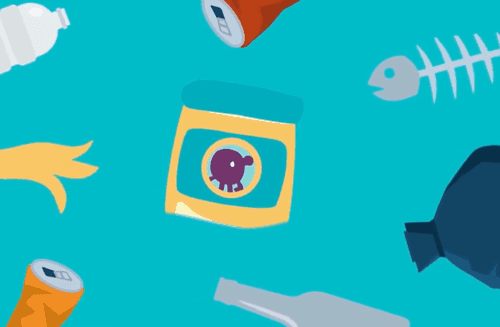
10/06/2022
Where will all the waste in Brazil end up?
At the end of today, each Brazilian will have generated (on average) 1 kilogram of waste. Currently the country produces about 217,000 tons of solid waste a day. This is equivalent to 79 million tons a year and only 2% of this waste is recycled. But where will all this end up and what can be done to change this reality?
The data comes from the Brazilian Association of Public Cleaning Companies and Special Residues (Abrelpe in the Portuguese acronym) and indicate that about 40% of this waste is going to end up in open air dumps. There are about 3,000 places like these in operation in the country, receiving over 30 million tons of waste a year. A practice that contaminates soil and water, proliferates diseases and emits methane gas, one of the main greenhouse gases.
Know the plan
Improper disposal is one of the greatest problems faced in the management of waste in Brazil and that guided the creation of the new National Plan for Solid Waste (Planares in the Portuguese acronym), published in April this year by the Federal Government. The document provides a diagnosis of the current situation and possible solutions, with goals and deadlines. One of the goals is the end of all city dumps by 2024.
Twelve years late
The Brazilian law for solid waste management was enacted in 2010, but it waited 12 years for this regulation. It is called the National Policy on Solid Waste (PNRS) and establishes the instruments and objectives that must now be fulfilled by the Planares, in a 20-year horizon. Amongst them, the end of the trash dumps, encouraging recycling, the recovery of the waste pickers and the implantation of reverse logistics.
There is an urgent need to reuse waste
Another priority point of Planares is recycling and reuse. The main target is that by the year 2040 at least 48% of the waste will be reused in some way, and that by 2024 the country will recycle at least 13.8% of the waste. The data brought about by the plan's diagnosis indicate that today the rate of recycled dry materials is a little more than 2%, and among organic materials (which represent almost half of all the waste generated) the reuse is only 0.2%.
Circular Economy to Generate Less Waste
The reality of Brazil ranks it in 4th position among the countries that generate the most waste in the world, behind only the United States, China and India. Therefore, more than just thinking about how to better dispose of waste, it is necessary to think about how to reduce this amount. This is what the circular economy proposes.
For Professor Dr. Edson Grandisoli, Pedagogical Coordinator and Educational Ambassador of the Circular Movement, public policies need to address this: "There are still many challenges to be faced, which have been advocated since the 2010 PNRS, but the vision of the Circular Economy deals precisely with not generating all this quantity of waste. Policies and their incentives must also promote the practice of the Circular Economy", he defends.
Watch the video in which Muti, the Circular Movement Mascot, goes through three of the journeys that a waste can make when discarded in a city like São Paulo (Brazil):
What is the circular economy?
The Circular Economy proposes a new look at our way of producing, consuming, and disposing, in order to optimize the planet's resources and generate less and less waste. In other words, an alternative model to the Linear Economy - to extract, produce, use and discard - which has proved to be increasingly unsustainable throughout history. In the Circular Economy, the goal is to keep materials in circulation longer by reusing them until nothing becomes waste! For this model to become a reality, we all have a role to play. It is a true collaborative circle, which feeds itself, and helps to regenerate the planet and our relations.
Learn about Circular Economy
If you are interested in learning more about this topic, visit Circular Academy, the first free Latin American course on circular economy aimed at general audiences. All of us, in partnership and collaboration, can make a difference in building a more circular planet.
About Circular Movement
Created in 2020, amid the crisis caused by the Covid-19 pandemic, Circular Movement is a collaborative ecosystem that strives to encourage the transition from linear to circular economy. The idea that every resource can be reused and transformed is the motto of circular economy, the movement’s basic concept. Circular Movement is an open initiative that promotes collaborative spaces with a mission to reach more people and places. The movement’s purpose is to inform people and institutions that a future without waste is possible through education and culture, the adoption of new behaviors and the development of new processes, products and attitudes.

